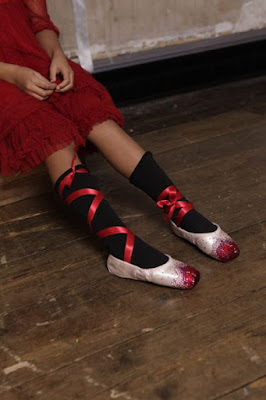Trigger Warning:
An analogy of the UK's national mental health crisis &
consequences of unmet mental health needs.
Ends with options for seeking urgent help.
As an “inclusive & tolerant” society,
we were appalled recently by scenes of officials seemingly standing by as desperate children & adults risked, & ultimately lost, their precious lives boarding an insubstantial boat, heading into treacherous seas seeking safety.
Yet we remain indifferent, maybe ambivalent,
to a similar scenario in our own mental health system.
Too many children & adults, struggling to fit in
& excluded from their “inclusive & tolerant” society, find themselves fighting for their precious lives, metaphorically flailing in treacherous seas seeking safety.
Rescue boats advertise their presence,
& caring practitioners point the way, but the life lines are overloaded & seemingly inaccessible for many.
Some officials glance, then sail superiorly by,
muttering things like “you’ll grow out of it” or “get a job” or “in my opinion the risk of you actually drowning is low so it’s not worth me acting”.
Some officials stop to reprimand those seeking safety, pointing out the seriously ill people on land needing their help, or limiting their help to those already below the surface.
Other officials say there’s no space on the boats
& the struggling children & adults must wait in the treacherous seas until space becomes available, which will be years, throwing in a selection of bouyancy aids to try meanwhile.
Then boats appear on the horizon promising space
but, having been “too well” for earlier boats, you’re now deemed “too unwell” for these boats, or you’re denied access because you’re waiting in line for other distant boats.
Some tell of remote rocks you may rest on
but only at certain times of the day, so time your desperation accordingly.
Some offer boats in glass bottles,
for those with the means of breaking through glass.
And for those with autistic sick brains
the obstacles to safety swell.
Then, some officials say they can’t help
because they’ve only been trained to save people with non-autistic sick brains.
Other officials might tell you not to even try
getting on their boats because they’re not suitable for people with autistic brains, failing to notice, in that moment, any boat is better than no boat & failing to acknowledge that people with autistic brains have likely been in the water much, much longer (their flailing in treacherous seas normalised) & autistic brains are much, much more likely to succumb to it’s depths*.
The trauma of flailing in treacherous seas,
unaided for so long, numbs the autistic brain & silences autistic screams; & these desperate souls are passed by for those whose needs are deemed greater because they can still scream.
It’s as if autistic souls were given life vests
but without a whistle for drawing attention.
Without a whistle, & with screaming silenced
by catatonia misinterpreted as a state of relative calm by officials, we flail, unheard & untreated, drowning unseen*.
To those in boats (those boats we're all supposed to be in, even if we're in different boats) I say:
Look again at the choppy waters around the boats
(those on bigger boats, further from the sea’s surface, may need to look harder): what looks like breaking waves may actually be the desperate waves of struggling, broken children & adults seeking safety whilst officials stand by.
Appalled?
This advent, these are my seasonal wishes:
To see free ships come sailing in,
on Christmas Day, on Christmas Day,
To see free ships come sailing in,
breaking through the dark.
To see free ships come sailing in,
And all the bells on earth to ring,
And all the angels in heaven to sing,
On Christmas Day, on Christmas Day.
I wish for sufficient & suitable spaces
on substantial boats for desperate souls when travel across treacherous seas is unavoidable to be safe;
I wish officials on shore would intervene earlier
to help the struggling children & adults feel safe on land, minimising displacement & reducing the volume of desperate souls in treacherous seas.
I wish society would flex & evolve
to better include struggling children & adults so they feel safe where they are, anchored to solid ground, thriving autonomously, Captains of their own ships, officials standing by & saluting rightfully.
I wish. I wish. I wish.
Save Our (Desperate) Souls
~o0o~
* Autistic adults who do not have a learning disability are 9 times more likely to die from suicide; autistic children are 28 times more likely to think about or attempt suicide (source autistica.org).
~o0o~
An Aside:
For as long as I can remember,
even in calm waters or back on land,
I’ve always feared death by drowning. I heard it said once that the way you most fear dying is the way you will die. I’ve no idea how true this is, nor have I dwelt overly on such a harbinger of gloom, but recently I'm forced to acknowledge I often feel I'm drowning metaphorically, if not literally. Although, I don't intend to!
~o0o~
Unconvinced of the crisis?
Watch “Dr Alex: Our Young Mental Health Crisis” filmed for BBC Children in Need 2021
Struggling yourself?
If you need help now there are options (for full list of options offering immediate help in the UK visit NHS.uk):
"To talk, any time of day or night, free listening services offer confidential support from trained volunteers. You can talk about anything that's troubling you, no matter how difficult:
Call 116 123 to talk to Samaritans,
or email jo@samaritans.org for a reply within 24 hours
Text "SHOUT" to 85258 to contact the Shout Crisis Text Line,
or text "YM" if you're under 19
If you're under 19, you can also call 0800 1111 to talk to Childline. The number will not appear on a phone bill."
Reach out - you are not alone x
Origin Unknown


























